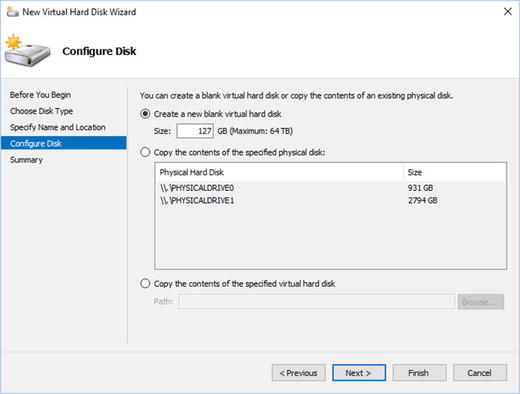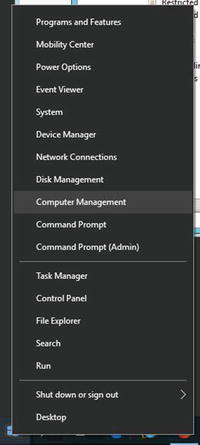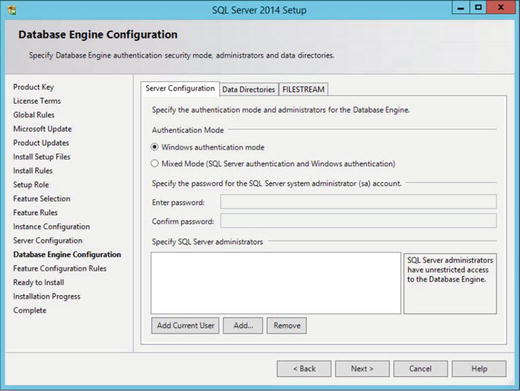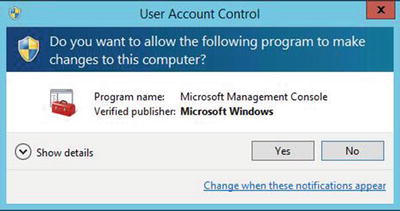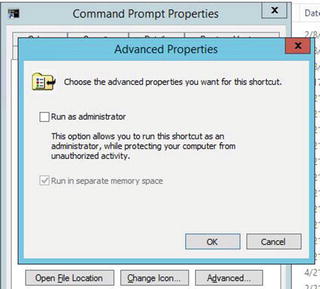SQL Server is the muscle behind SharePoint. SQL Server is the relational database that SharePoint uses to store most of its content; unless BLOB (binary large object) storage is used. We’re not going to cover configuring a BLOB store in this book. The version of SQL Server that we configure will hopefully have four disks inside the VM; but don’t worry, if your hardware does not have enough SCSI interfaces to support four disks, you’ll still be able to get by with just one, as this is just a home lab, not a live-fire situation.
In this chapter, you’re going to spin up and configure SQL Server in home lab fashion. You might have already created the SQL Server machine or maybe you waited until now, either way is fine. If you already created it, you’re going to add more disks to it and then you’ll add SQL Server and configure SQL Server for SharePoint.
SQL Server communicates over port 1433 by default. We’re not going to change that in our lab. Each one of the SharePoint VMs will utilize the SQL client to set up an alias. This alias allows for portability of databases between SQL servers.
In this book, SQL Server will only use one account for the install and for its operations. In a production, you would configure much more than one account. Our SharePoint farm will be configured very closely to a production farm in regards to service accounts and least privilege.
Are you ready for some SQL?
Let’s do this thang!
Caution
This part is really fun and you could decide that you’d like to become an SQL DBA. The “Do You Want to Know More?” section has links to doing just that!
You just installed SQL Server!
If SQL Server were in production, the default instance might already have been used and you might have been installing a named instance. This is not a big deal to you, or to SharePoint, as long as both of you know the name of the instance. Step 50 would be different in that case.
Congrats on installing SQL, and if this is your first time installing SQL, a super big congrats!
There are some additional steps related to the SharePoint installation that will bring you back to SQL Server. The only reason we’re not doing them here is because they really deserve to be part of the chapter on installing SharePoint 2016. This is for two reasons: (1) These settings are specific to a SharePoint install and would definitely not want to be overlooked by someone who bought this book simply for Chapter 10. (2) They are prerequisites for getting SharePoint installed, which goes hand in hand with point 1.
By nature, SQL Server is capable of processing requests in an asynchronous fashion in regards to the number of server processes used per request. In other words, SQL Server can process more than one request in a single server process. With the introduction of SharePoint 2013, you only want SQL Server to use a single server process for each request. As a result, the maximum degree of parallelism is set to 1. There are many other best practices for SQL in regards to SharePoint that we didn’t touch in this chapter.
In the next chapter, we’ll get into some of the best practices, but not all of them, in regards to SQL for SharePoint.
Do You Want to Know More?
Table 9-1 provides additional information.
Table 9-1. Here If You Want to Dive Deeper
Topic | URL |
|---|---|
Error message when you open SQL Server configuration manager | |
Best practices for SQL Server in a SharePoint Server farm | |
Microsoft SQL Server certifications | https://www.microsoft.com/en-us/learning/sql-certification.aspx |
SQL Server 2012 T-SQL Recipes by Jason Brimhall et al (Apress, 2015) | |
Beginning SQL Server 2012 Administration by Robert Walters and Grant Fritchey (Apress, 2012) | |
Pro SQL Server Administration by Peter Carter (Apress, 2015) |
Summary
In this chapter, you created an SQL instance, configured to it run on separate drives, and learned where you would use least privileging; but opted to use the single service account. You also solved the inability for SQL Configuration Manager (SQLServerManager12.msc) to open on Server 2012. You finished the chapter by limiting SQL Server to 4GB, or some number less than the amount of RAM that you gave your SQL Server when you built it.
In the next chapter, you’ll have many exercises as you install SharePoint 2016. This will be a lot of fun!









